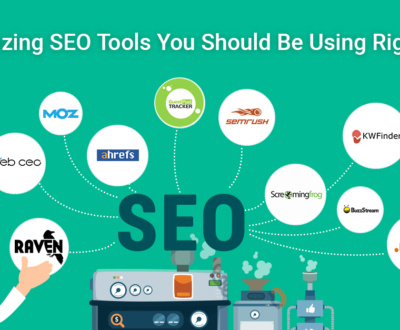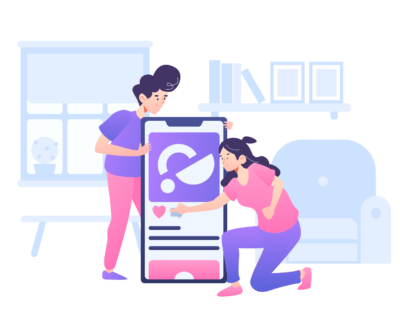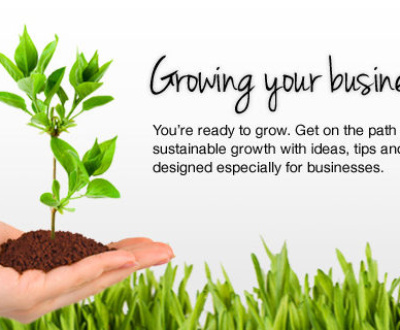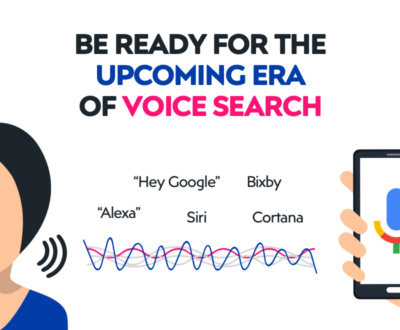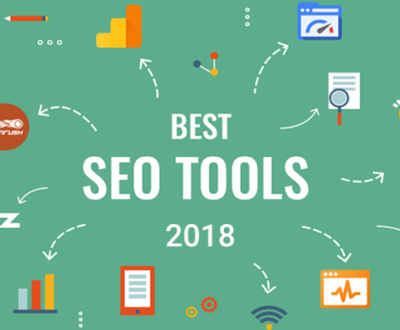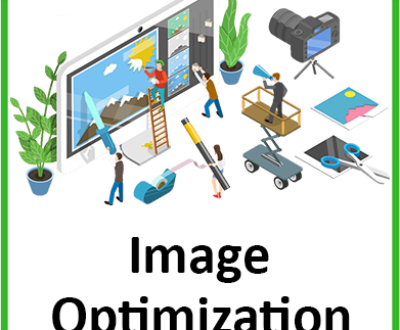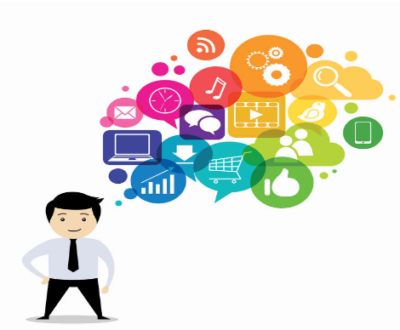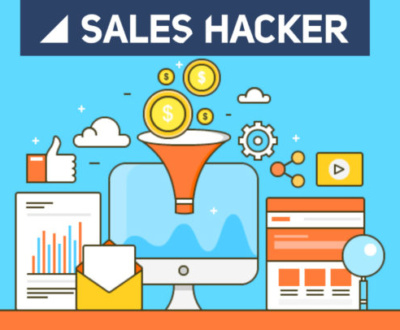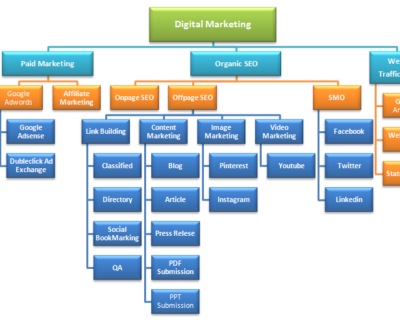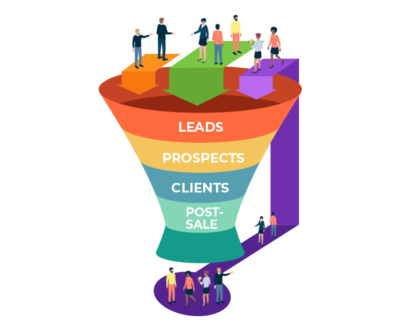Email Marketing
- July 12, 2022
- Digital Marketing, Google Ads, Lead Generation, Marketing, Physical Marketing, SEO, Traditional Marketing
What is email marketing?
Email marketing is a type of direct marketing that uses personal emails to educate your email list about your product or service. It can also be used to convince your email list to take a specific action, such as making a purchase, booking a demo, signing up for a trial, or registering for an event.
Let’s take a look at the most comprehensive email marketing guide on the internet.
- Why Email Marketing Is Important
- Glossary of Email Marketing
- How Email Marketing Works
- Segment your email list
- Increase email open rates
- Automate your email marketing with autoresponders
- FAQ (frequently asked questions)
This is a very effective digital marketing strategy. Effective email marketing changes the perspective of customers and converts one-time buyers into repeat customers and enthusiastic fans.

Email marketing is the most direct and effective way to connect with, nurture and create your prospects, consistently beating all other marketing channels.
In this guide, we’ll walk you through the process of setting up your email marketing funnel so you can capture leads and generate sales 24/7.
This guide is for those who are ready to get started with email marketing. If you’re not sure, you can read our guide on why you should build an email list NOW!
With this specific email marketing guide, you can understand:
- How to build an email list full of targeted leads and buyers. How to optimize your emails for the highest open rates and click-through rates (CTRs).
- How to automate the process of nurturing leads and converting prospects into customers.
- Nice to hear?
Why Email Marketing Is Important
We’ve tackled the biggest question, what is email marketing, but we still don’t know why email marketing is so important to your business. Let’s talk about it now. Despite the rise of social media and spam email (which, after all, is never a good marketing strategy), email remains the most effective way to generate leads and improve customer loyalty. .
There are many reasons why you should make email marketing one of your top priorities, but here are the top 3:
Email is the #1 communication channel. Did you know that at least 99% of consumers check their email every day? This cannot be said about any other communication channel.
2. You own your list. On any social media platform, your account (along with all of your followers and posts) may be suspended or deleted at any time, for any reason, and without notice. However, you do have your email list. No one can take those clues away from you.
3. Email is just more converting. People who purchased products sold via email spent 138% more than those who did not receive email offers. In fact, email marketing has an ROI (return on investment) of 4400%. That’s great! And if you’re wondering if social media converts better, think again: the average cost of an email order is at least three times higher than social.
Email is simply the best way to sell online. Now that you know the importance of email marketing, let’s learn the best ways to do it.
Glossary of Email Marketing
Email marketing has its own vocabulary that can be confusing. But don’t worry! We’ve put together a simple email marketing glossary to help you identify key terms so you can easily plan your email marketing strategy.
Subscriber: Anyone who signs up or chooses to receive emails from you
Opt In (verb): Choose to receive marketing emails from a person, brand or company
Optin (noun): an incentive for people to opt-in to your list; also called a lead magnet
List: a collection of email subscribers; a list can have multiple groups or sections
Group: a category of subscribers within a list associated with a brand or company
Segment: A category of subscribers that is automatically created based on their subscription activity, such as time zone, engagement rate, purchase history, etc.
Automation: a series of prescriptive emails that are automatically generated in response to subscriber actions, such as an abandoned car automation; also known as an email sequence or autoresponder
Broadcast: a one-time message that you send to groups or parts of your list; also known as newsletters, announcements, promotions
Optin Form: a registration form where visitors can join your email list; Opt-in forms can be pop-up, embedded, full-screen, scrollable, floating, and more
Landing page: a separate page with an opt-in form that people can use to opt-in to your mailing list
How Email Marketing Works
Wondering how to get started with email marketing? Email marketing is made up of many moving parts, but that doesn’t mean it has to be complicated. Here’s how it broke down…
- Start with your list: This is because you can’t send email marketing campaigns if no one else is sending them. And another thing to keep in mind is that email marketing won’t work if you don’t have the right people on your list.
We enable companies to create great optin campaigns in minutes with no coding skills required.
With our most advanced targeting, you can then show these campaigns to the right people at the right moment in their customer journey. As a result, you can grow your list with quality leads and see a significant increase in your company’s revenue.
- Add an email service provider: An email service provider (ESP) allows you to segment your audience, organize your list, and distribute email campaigns to your audience. You can also track results to improve future campaigns. A good ESP should go hand in hand with your other marketing tools so you can autopilot everything as you increase your leads.
There are plenty of email service providers out there, but we’re giving advice and making it easy to choose the right one for you and your goals. Great later in this tutorial we will list our favorite ESPs for you to choose from.
After two steps, it’s just a matter of fine-tuning your lists and your posts to reach and really connect with your audience. Additionally, you can set up some automation in your email service to speed things up for you. Grow your email list
What most people do when they want to build an email list is put an opt-in form on their website and hope people sign up. Unfortunately, this strategy often does not work well.
To grow your email list, you need to attract people with an attractive offer. You need a lead magnet.
What is a lead magnet?
A lead magnet is a special thing that you give away for free in exchange for an email address. It doesn’t have to cost anything to make; Most lead magnets are digital materials such as PDF files, MP3 audio files, or videos that you can create yourself at little or no cost.
For example SEO Guide
It can be anything you want as long as it provides free value to your visitors.
Some popular examples of lead magnets are:
- e-books
- Scam with tips or resources
- Partial reports of case studies
- In the webinar
- Free trials as samples
- Free quote or consultation
- Quizzes or self-assessment
- coupon
- The possibilities are endless!
For more magnet ideas, check out our list of magnet ideas to grow your email list.
What makes a good lead magnet?
You already know that a lead magnet should provide free value. But if you want your lead magnet to be very effective, there are 5 behaviors to consider:
- Ease of Carrying: Lead magnets are only effective when the public uses them, so if you deliver a 300-page manifesto, you won’t get any traction.
- Be actionable: Lead magnets should provide a useful tool, skill or useful information that is available to your audience.
- Makes noticeable progress: People continue to buy products and services if they work well. Your lead magnet can be successful if it is as valuable as your products and services.
- Relevant: Once you do your homework on your prospects, you won’t have a problem with a lead magnet topic that can solve problems.
- Instant availability: People love instant gratification, so give it away. Consider 4 ways to deliver a lead magnet to see how easy it is to get your lead magnet .
Let’s take a look at some of the best lead magnet examples for email marketing campaigns in real life.
Now that you know what a lead magnet is and how to make it effective, you need to fill out your optin form.
How to Create an Optin Form That Converts
The purpose of your opt-in form is to convey the great benefits of your lead magnet so that your website visitors will sign up for your email newsletters instead of getting the lead magnet.
To convert the login form, you must have the following components:
- Catchy Title: Make sure your title clearly describes the big benefits of your lead magnet
- Helpful description: Is your description short, clear and to the point? Use bullet points to help the reader’s eye quickly scan what they are getting.
- Attractive images: If you can, take a picture of a lead magnet (as a mockup of your e-book). A photo of someone looking at an opt-in form is also a great way to increase conversation. We have a great list of visual tools that can help you create great visuals.
- Simple form: Don’t try to ask for more than one name and email address. Asking too much information too quickly can ruin your conversation.
- Inspire Subscribe Button: Make sure you use a different color for your subscribe button so it really pops off the page.
Segment your email list
Most marketing experts will tell you to build an email list. But they don’t tell you that your email list isn’t effective without proper segmentation.
What is email list segmentation? Email list segmentation is the process of dividing your subscribers into small groups based on specific behaviors so that you can send them more personal and relevant emails.
Instead of blasting each email out to your entire email list, segmentation allows you to send just a few emails to the subscribers you think are most interested in that content, resulting in higher conversions.
Why Segment Your Email Marketing List?
List segmentation is proven to increase email open rates, increase click-through rates, and decrease unsubscribe rates. That’s why smart email marketers use segmentation to improve the effectiveness of their email campaigns. Once you “tag” your subscribers on various sites, you can send really powerful autoresponders, a series of emails that are sent automatically based on certain conditions that you can use to nurture leads and generate sales. Let’s talk more about autoresponders in automation.
Segments make it easy to decide which subject lines and posts to write that will entice users to open and participate in your email campaigns.
The purpose of segmentation should be to know how did the user get your email list?
Did they buy a product? Visit a specific website? Download a specific lead magnet?
There are many different ways to trim and shorten a list. Here are some ways to get started:
New Subscribers: Send new subscribers a welcome email or welcome series.
Preferences: Subscribers who want to hear about blog posts vs. those who just want to announce a sale.
Interests: subscribers who love classical music versus those who love pop.
Location: Let subscribers living in the area know about your local activity.
Open Rate: Reward your most engaged subscribers with a special offer just for them.
Inaction: Remind subscribers who haven’t yet taken the next step you want them to take.
Lead Magnet: Send targeted emails based on a lead magnet topic of your choice.
Shopping cart loss: Remind subscribers to add items to their cart that they haven’t yet checked out.
These ideas are just a hint of what you can do to share your email list. For more ideas, check out 50 Smart Ways to Segment Your Email List Like a Pro.
Pro tip: Contact forms are a quick way to collect information from your prospects that can be directly used to create more targeted messages. Check out our pick of the best form plugin (WordPress) and see how you can really improve your email marketing!
Improve your email open rates
This section is especially important because for all the hard work you put into growing and sharing your email list, it won’t do you any good if your emails aren’t actually opened.
There are a number of factors that play into whether or not your emails get opened. Let’s explore each of them.
- Avoid spam filters
Perhaps the most obvious problem is when your email is sent to the subscriber’s spam folder. Now that you’re authorized to send emails and have chosen one of our recommended email marketing providers, you’re off to a great start.
Here are some email marketing best practices to prevent your email from ending up in spam folders:
Make sure that everyone who receives has actually opted in to receive your emails. Seriously. We cannot give enough weight to this point. Send your email campaign from a valid IP address. This is an IP address that has not been previously used by another spammer.
- Send email via verified fields.
- Keep your email template code clean.
- Use merge tags to customize the To: field in your email campaign. Show subscribers how to whitelist your emails and ask them to add you to their address book.
- Avoid overusing the word “sale” (these are spam-triggering words like “buy,” “cancel,” “discount,” or “cash”).
- Don’t “bait and switch” by using misleading subject lines.
- Enter your location.
- Include a quick way for subscribers to unsubscribe from your emails. Almost everything is taken care of when you opt for a reputable email marketing service.
- Get inactive subscribers to keep your list fresh
It’s important to email your subscribers regularly so your list doesn’t get lost. However, over time, email subscribers still exist.
Some people may have changed email accounts or may no longer be interested in your brand.
To keep your list fresh and full of engaged subscribers, it’s a good idea to remove inactive subscribers from time to time. An inactive subscriber can be anyone who has not interacted with an email in the last 6 months or more.
But before you delete them, try sending another email campaign and try to re-engage your inactive subscribers. For example, Carol Tice recently sent an email to her inactive subscribers saying, “Am I mad at you?” and asked if they still wanted to stay enrolled. Some people will respond, but others will come clean. Another way to keep your list current is to check in with your subscribers from time to time and ask if they want to update their information and preferences. This will remind them that they can control how they treat you.
- Your timing is perfect
Timing can have a huge impact on when your subscribers open your emails and your conversion rate, so think carefully about when and when you send your email.
You won’t know the perfect time right away, but do some A/B testing to see which time frames look best and review future campaigns. But you may be wondering, has anyone done any tests that you can use? Yes!
The time to send an email is this: imagine a day in the life of your specific audience. What do they do in the morning, afternoon and evening? What does her work day look like? How long do they stay up at night? How early in the morning do they get up?
- Clarify the subject
Your subject lines are everything when the email opens and shows the click-through rates. Your job is to make your items visible.
Here are some tips for creating the best email marketing subject line:
- Stimulate curiosity, but don’t be too quick. You want them to be interesting enough to open and click, but nothing too cryptic that the subscriber has no idea what you’re talking about.
- Including numbers. There is something about the characters that grabs attention.
- Use a friendly and conversational tone.
- Speak in the language and style that your subscribers use themselves, especially when they talk to their friends. We wrote a whole post on the best converting email subject lines for some good subject line examples.
- Write to only one person
When setting the subject and content of the message, it is natural to think about the thousands of people who are going to receive the message.
However, it is more effective to write in a way that appears to be speaking to an individual, with a personal subject and a personal message.
To write this way, you need to know your buyer persona. You have to understand their problems, their desires, their values, their likes and dislikes.
If you’re having trouble with this, send an email for a quick five-minute chat. During the call, you can ask questions to help you understand what your participants’ needs are and what they are thinking.
Spending a day or two talking to your subscribers is a good time because it can help you a lot: not only in your messages, but in creating or improving your products and services.
- Writing as a friend
When writing emails, put away your business hat and write like a friend. This is the only way to really attract your subscribers and get them to open and click on your emails.
For example, a sentence like: “We offer our customers savings!” go away and pack up
A more friendly alternative might be, “You need to check this deal…”
This makes the email look more personal and makes it less likely that your recipients will delete your message and continue with it.
Remember: in this information age, everyone is looking for reasons to ignore your emails. They found no reason to read it. But if you reach them on a personal level, it is better to open the email.
- Write exceptional content, every time
You might think that if a subscriber opens your email, you’ve won. However, the actual content of your email plays an important role in your open rate. Here’s why: if your subscribers are happy with your content, they’re more likely to open your emails in the future. They may even start waiting for your emails. Conversely, if a subscriber is not satisfied with what they received in your email, they will likely never open your emails again and may even unsubscribe.
So how do you make sure your subscribers are happy with your email content? Simple: make it unique. Link to extremely valuable resources like a free e-book, epic blog post, or webinar.
To keep your list fresh and full of engaged subscribers, it’s a good idea to remove inactive subscribers from time to time. An inactive subscriber can be anyone who has not interacted with an email in the last 6 months or more.
But before you delete them, try sending another email campaign and try to re-engage your inactive subscribers. For example, Carol Tice recently sent an email to her inactive subscribers saying, “Am I mad at you?” and asked if they still wanted to stay enrolled. Some people will respond, but others will come clean. Another way to keep your list current is to check in with your subscribers from time to time and ask if they want to update their information and preferences. This will remind them that they can control how they treat you.
- Your timing is perfect
Timing can have a huge impact on when your subscribers open your emails and your conversion rate, so think carefully about when and when you send your email.
You won’t know the perfect time right away, but do some A/B testing to see which time frames look best and review future campaigns. But you may be wondering, has anyone done any tests that you can use? Yes!
The time to send an email is this: imagine a day in the life of your specific audience. What do they do in the morning, afternoon and evening? What does her work day look like? How long do they stay up at night? How early in the morning do they get up?
- Clarify the subject
Your subject lines are everything when the email opens and shows the click-through rates. Your job is to make your items visible.
Here are some tips for creating the best email marketing subject line:
- Stimulate curiosity, but don’t be too quick. You want them to be interesting enough to open and click, but nothing too cryptic that the subscriber has no idea what you’re talking about.
- Including numbers. There is something about the characters that grabs attention.
- Use a friendly and conversational tone.
Speak in the language and style that your subscribers use themselves, especially when they talk to their friends. We wrote a whole post on the best converting email subject lines for some good subject line examples.
- Write to only one person
When setting the subject and content of the message, it is natural to think about the thousands of people who are going to receive the message.
However, it is more effective to write in a way that appears to be speaking to an individual, with a personal subject and a personal message.
To write this way, you need to know your buyer persona. You have to understand their problems, their desires, their values, their likes and dislikes.
If you’re having trouble with this, send an email for a quick five-minute chat. During the call, you can ask questions to help you understand what your participants’ needs are and what they are thinking.
Spending a day or two talking to your subscribers is a good time because it can help you a lot: not only in your messages, but in creating or improving your products and services.
- Writing as a friend
When writing emails, put away your business hat and write like a friend. This is the only way to really attract your subscribers and get them to open and click on your emails.
For example, a sentence like: “We offer our customers savings!” go away and pack up
A more friendly alternative might be, “You need to check this deal…”
This makes the email look more personal and makes it less likely that your recipients will delete your message and continue with it.
Remember: in this information age, everyone is looking for reasons to ignore your emails. They found no reason to read it. But if you reach them on a personal level, it is better to open the email.
- Write exceptional content, every time
You might think that if a subscriber opens your email, you’ve won. However, the actual content of your email plays an important role in your open rate. Here’s why: if your subscribers are happy with your content, they’re more likely to open your emails in the future. They may even start waiting for your emails. Conversely, if a subscriber is not satisfied with what they received in your email, they will likely never open your emails again and may even unsubscribe.
So how do you make sure your subscribers are happy with your email content?
Simple: make it unique. Link to extremely valuable resources like a free e-book, epic blog post, or webinar.
Step 1: Select a destination for the auto-reply
There are many different goals you can do for your autoresponder, but here are 4 of the most common. Before doing so, select one (or a combination) of the following targets for a series of autoresponders.
Send new subscribers a “welcome” order. This is the message you send to people after they subscribe to your mailing list. In the magnet, you can have a quick download link, thank you for signing up, or maybe a call to view your most popular blog posts. Every email list needs a series of welcome emails: don’t miss this opportunity to “preach” to your new subscribers and turn them into loyal fans.
Use it as a lead magnet / free mini-course. You can also use an autoresponder as a lead magnet to attract new subscribers to your mailing list. This is usually done in the form of a free “mini-course” or free “challenge” that promises to deliver a series of emails with lessons (or other valuable information) over the course of many days or weeks. The high cost of a mini-course or challenge like this is well-known, making it a very effective lead magnet. Looking for the best WordPress LMS plugin to give you a cutting edge course?
Selling on autopilot. Creating a sequential electronic autoresponder funnel is a widely accepted strategy used by information suppliers, but it can also be used by software companies, e-commerce companies, and service providers. For example, it could be a series of educational videos, a marketing video, and a follow-up to sell your information products. Or you can create a series of free educational emails and then invite prospects to a live or recorded webinar where you present your offer. In the case of an online store, your sales order may contain promotional offers for products that your subscriber has just viewed on your website.
Support up-sells / cross-sells. You can even set up a sequential autoresponder for someone after they make a purchase and get repeat customers. Depending on the products you sell, you can upsell or cross-sell related products. For example, if someone buys a digital camera, you can offer to add a lens, tripod, and other accessories to their order before shipping. Or, if you sell products that people buy regularly (like food or disposable items like diapers), you can automatically send them offers for new items when they know they’re about to order.
Step 2: Map the entire email order
In this step you create a sketch for your order. But first you need to know how long you want your order to last. how many days How many emails? There is no universal rule about exactly how many emails you need in your email order. Your order should be long enough to help you achieve your goals, nothing more, nothing less. This length should be determined by their purpose, your features, subscriber preferences, etc.
You also need to know how far each email is sent.
It’s good to send one email every two days for educational emails and three to four emails a day if you have a big sale coming up. This completely depends on the purpose of your order (so you selected it in step 1).
You need to find a healthy balance between your “value” emails and your “offer” (sales) email.
The exact number of emails you send doesn’t matter as long as you’re sending more valuable emails than sales emails. This will help you not burn the list.
To simplify, you can use the 80/20 rule: 80% of your emails should provide value, while only 20% of your emails are sales related. Next, write and outline your order from start to finish, describe what topics will be covered in each email and the call to action for each email. A call to action could be clicking a link, sharing a blog post on social media, replying to your email, or buying your product.
Here is an example of an information product launch sequence:
Email 1: Introduction and thank you for registering.
Email 2: Explain why the particular topic / issue is important. This will help increase the demand for your product. Email 3: Explain what you need to do to solve a specific problem / achieve a specific goal. It builds credibility and you start helping people move forward.
Email 4: Please explain in more detail how you can solve this problem. Shut down the sale and mention that you will be launching a new product/program in a few days.
Email 5: Launch your product. Tell your listing that your product is live and will be available for purchase in the coming days. Then close the basket and it is no longer usable.
Email 6: Remind your subscribers about the product. Share how much it’s been bought for so far, what others are thinking and how many places are left.
Email 7: Last day before closing, first email. Tell your subscribers that you still have 24 hours and that your product will no longer be available after that. Remind them what they will learn from your program and what the benefits will be.
Email 8: Last day before closing, second email. Beat the tightness and only a few hours remain. After that, your product will not be available.
Email 9: Two hours before closing. This is where you get into absolute poverty and focus on the change people want to make in their lives. How much do they want to solve their problems / achieve their goals?
Email 10: Cart is closed. Send an email explaining to users that the product is no longer available. Share numbers about how many people signed up for your program.
Thank you all for your support.
Step 3: Write and convert a series of autoresponders
Writing the actual emails in your autoresponder series can be the hardest part of the job. You can outsource it to a professional copywriter. However, if you want to know how to do it yourself, here are some things to keep in mind:
Focus on the reader first. You should always write your emails to meet your subscribers’ needs, not yours. Provide ways to solve their problems, not just talk about your products and how good they are.
Ask yourself, what are my subscribers’ biggest pain points? How can I resolve their current issue with this email?
Use personalization. By customizing the content of your emails, it will be more relevant and important to them.
Personalization is more than just putting a subscriber’s first name in an email. You need to tailor the actual content of the email to their needs. For example, an online seller will find it more valuable to read an email with the subject line “How to create backlinks to your e-shop” than a generic subject line,
“How to create backlinks.”
Write good subject lines. David Ogilvy once said that 80 cents of your dollar should be spent on headline writing. The subject line is just as important in emails. If it doesn’t grab your attention, you can’t open it. This means spending most of your time writing and polishing the item. A good subject line in an email draws curiosity to the content of the email. It is also personal and highly relevant to the recipient.
Step 4: Monitoring and progress
While usually helpful, a series of email responses isn’t something you should do one day and then completely forget the next. For best results, review your email performance and identify areas for improvement. Then try A/B making some changes to make improvements.
When analyzing autoresponder campaigns, you should pay attention to the following:
Open prices. If your open rates aren’t where you want them to be, consider the following: Is this autoresponder relevant to your listing? Are your subject lines the best they can be? Did you send your emails in the shortest possible time?
Click through for rates. If your subscribers have already opened your email, have they actually taken the action they need? If you think you have a low CTR, maybe your body copy isn’t as effective as it should be.
Consider the following: Is your email copy relevant to the subject line? Are you offering real value to your email subscribers? Is your call to action clear enough? Is it easy to find the link?
Unsubscribe. The notification will always happen no matter what, and that’s usually a good thing because those people probably can’t buy from you yet. However, a high attrition rate may indicate that you have lost potential customers.
Consider the following: Why did people put you on their list in the first place, and have you kept that promise? Is the content of your autoresponder highly relevant to the part it is sending? Are you sending a lot of marketing emails with very little value?
Now that you can automate and target each of your email marketing campaigns, you can turn your campaigns into a marketing engine!
Frequently Asked Questions (FAQ) about email marketing
Here are some of the most frequently asked questions about email marketing. Some of that information is covered in this article, but it’s listed here for those of us who want a quick reference. ?
How do I create a strategy that follows email marketing best practices?
This guide is a great way to create the best email marketing strategy and we encourage you to follow it! We also have a great post on how to run a successful email marketing campaign that you need to check out. Here’s what you’ll find:
- Set a goal for your email campaign
- Decide what types of emails you will send
- Select audience share
- Choose the right technology
- Create striking options
- Schedule emails and follow-ups
- Create the perfect item
- Write your email marketing copy
- Design your email
- Test and track your email campaign
When do I send marketing emails?
There is no hard and fast rule when it comes to how often marketing emails should be sent, so we recommend that you ask your subscribers how often they want to hear from you. You can also run some A/B tests to see which frequency performs the best.
In general, you want to reach out to newer subscribers more often because that’s what they just taught you. But more than that, just send emails according to the schedule you set and nothing more.
When do I send marketing emails?
Timing varies and may vary depending on your list. Our advice is to experiment with it and see what gives you the best results for your subscribers. You can check Google Analytics to find out when your subscribers are most active and send your emails at those times. What email metrics should I check?
The main 3 criteria to follow in email marketing are:
Generosity. Email delivery rate is the number of emails that make an email successful for the recipient’s inbox.
Open Rate. Open rate indicates the number of recipients who opened your email.
Click through rate. Click-through rate shows the percentage of subscribers who click on a link in your email (usually your website’s landing page).
What is the difference between single opt-in and double opt-in?
One-time opt-in means that once a visitor clicks “subscribe” they will be on your list.
Duplicate opt-in means they click “subscribe” and then have to confirm they’ve subscribed by clicking a link in the confirmation email or other email transaction sent to the email address they provided. In this guide, we will share the following items in detail:
- The importance of email marketing
- How to begin
- Grow your email list
- How to Create an Innovative Optin Form
- Choose the best email marketing service
- Segment your email list
- Improve email open and click rates
- Automation with autoresponders
When building your email list, make sure you use these 14 long-changing areas to add email request forms. And make sure you have your email copy close to attract and read your subscribers.
About us and this blog
We are a digital marketing company with a focus on helping our customers achieve great results across several key areas.
Request a free quote
We offer professional SEO services that help websites increase their organic search score drastically in order to compete for the highest rankings even when it comes to highly competitive keywords.
Subscribe to our newsletter!
More from our blog
See all postsRecent Posts
- What are Web Stories and their importance? July 30, 2022
- What are Paid Ads and Advantages of Paid Ads? July 29, 2022
- How Web 2.0 is Different from the Web 3.0? July 28, 2022



